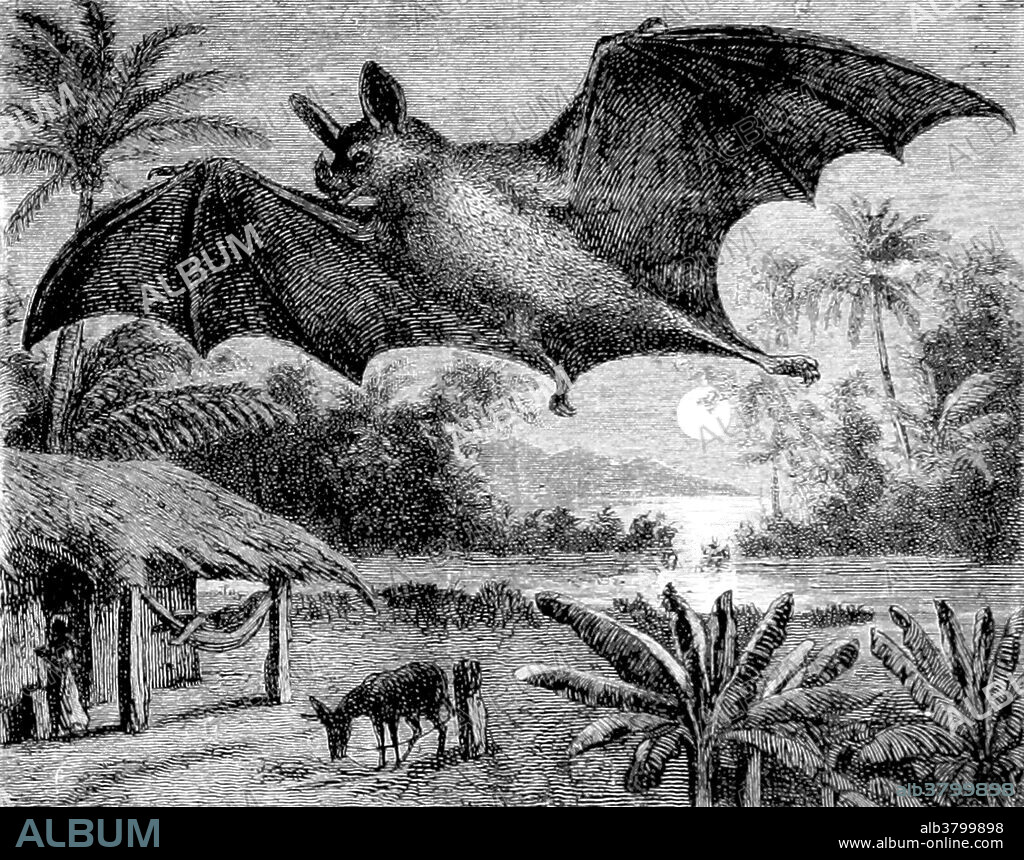alb3799898
Vampire Bat, 1898

|
Añadir a otro lightbox |
|
Añadir a otro lightbox |



¿Ya tienes cuenta? Iniciar sesión
¿No tienes cuenta? Regístrate
Compra esta imagen

Título:
Vampire Bat, 1898
Descripción:
Ver traducción automática
Vampire bats are bats whose food source is blood, a dietary trait called hematophagy. Three bat species feed solely on blood: the common vampire bat (Desmodus rotundus), the hairy-legged vampire bat (Diphylla ecaudata), and the white-winged vampire bat (Diaemus youngi). A vampire bat has front teeth that are specialized for cutting and the back teeth are much smaller than in other bats. The inferior colliculus, the part of the bat's brain that processes sound, is well adapted to detecting the regular breathing sounds of sleeping animals that serve as its main food source. While other bats have almost lost the ability to maneuver on land, vampire bats can walk, jump, and even run by using a unique, bounding gait, in which the forelimbs instead of the hindlimbs are recruited for force production, as the wings are much more powerful than the legs. Vampire bats use infrared radiation to locate blood hotspots on their prey. Image taken from page 375 of 'La Terra, trattato popolare di geografia universale" by Giovanni Marinelli, 1898.
Crédito:
Album / Science Source / British Library
Autorizaciones:
Modelo: No - Propiedad: No
¿Preguntas relacionadas con los derechos?
¿Preguntas relacionadas con los derechos?
Tamaño imagen:
4200 x 3308 px | 39.7 MB
Tamaño impresión:
35.6 x 28.0 cm | 14.0 x 11.0 in (300 dpi)
Palabras clave:
1898 • ARTE • AÑOS 1890 • BLANCO Y NEGRO • CHIROPTERA • CHORDATA • CORDADOS • DESMODONTINOS • DESMODUS ROTUNDUS • DIBUJO • HALLOWEEN • HISTORIA • HISTORICO • ILUSTRACION • MAMIFERO • MAMÍFEROS • OBRA DE ARTE • QUIRÓPTEROS • SIGLO XIX • VOLADOR
 Pinterest
Pinterest Twitter
Twitter Facebook
Facebook Copiar enlace
Copiar enlace Email
Email
